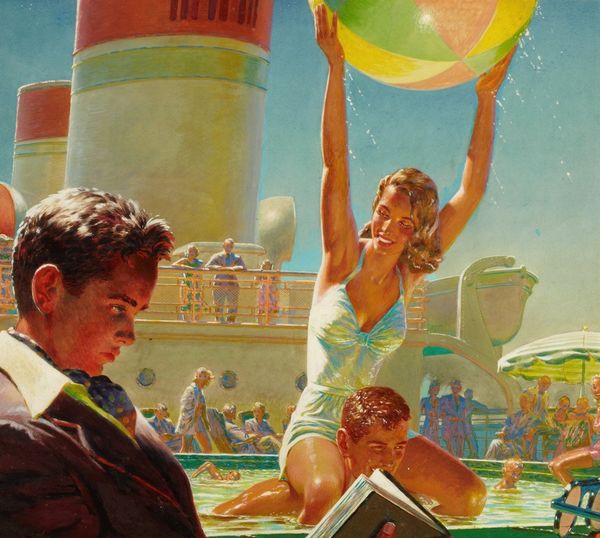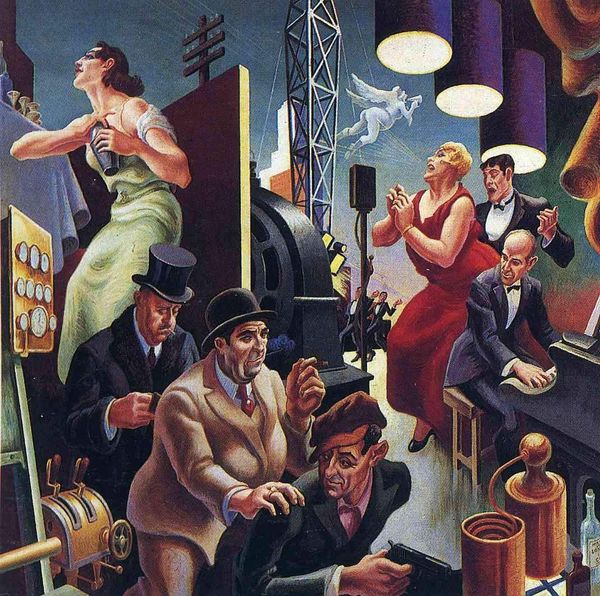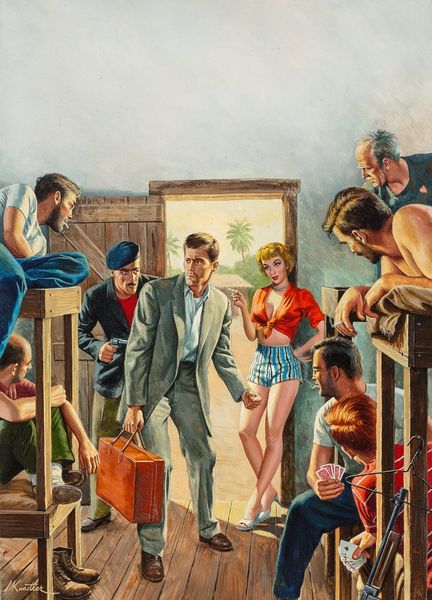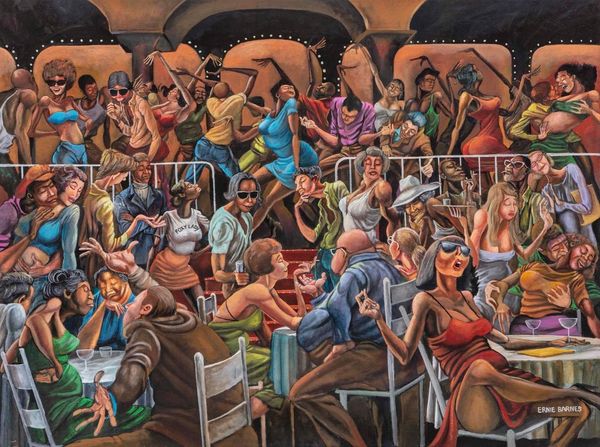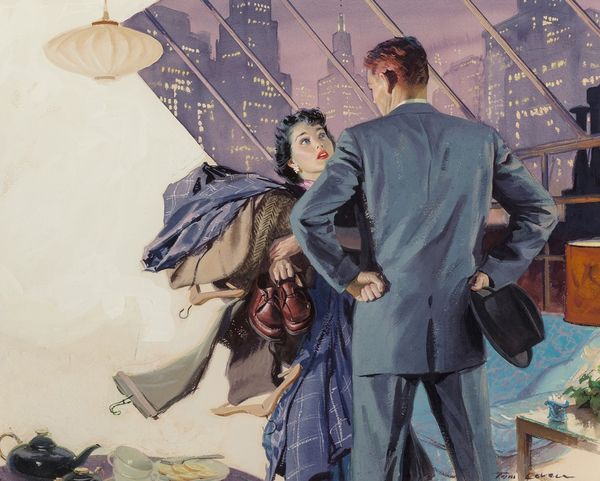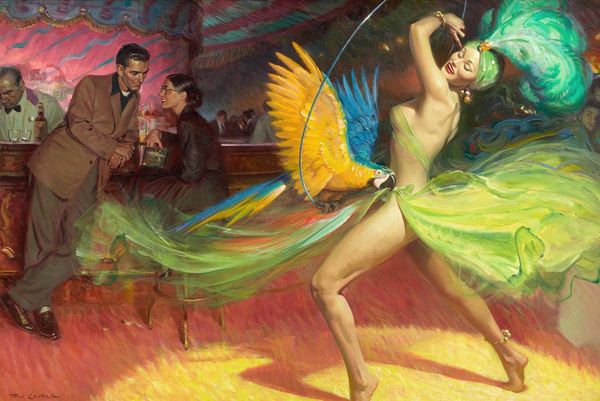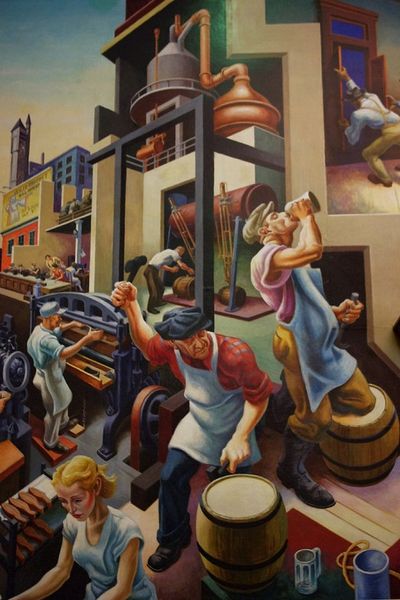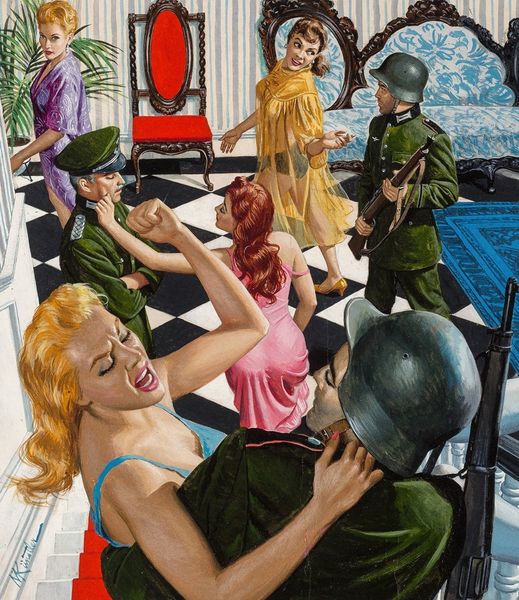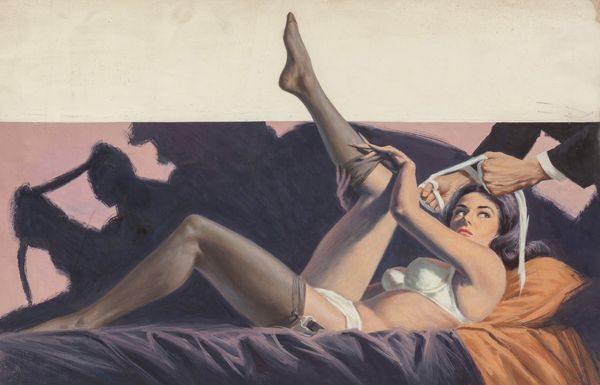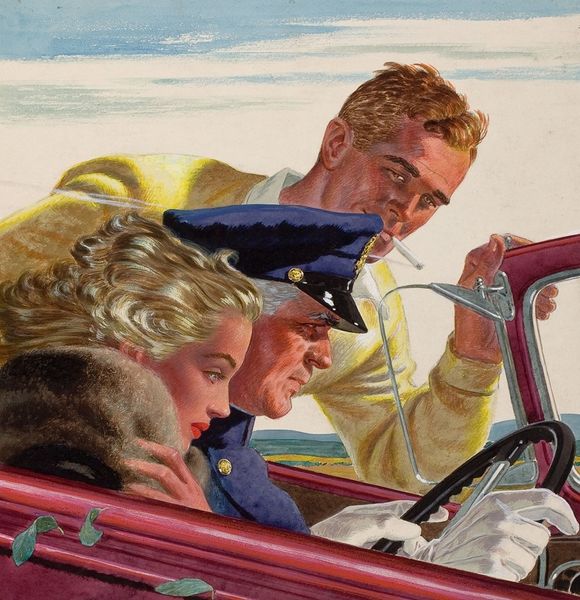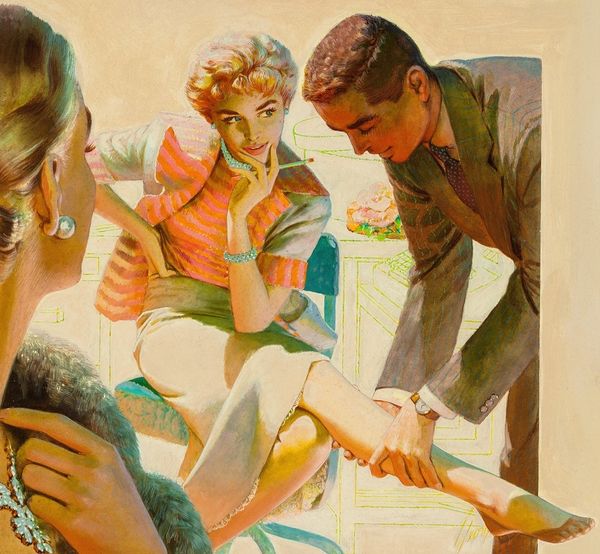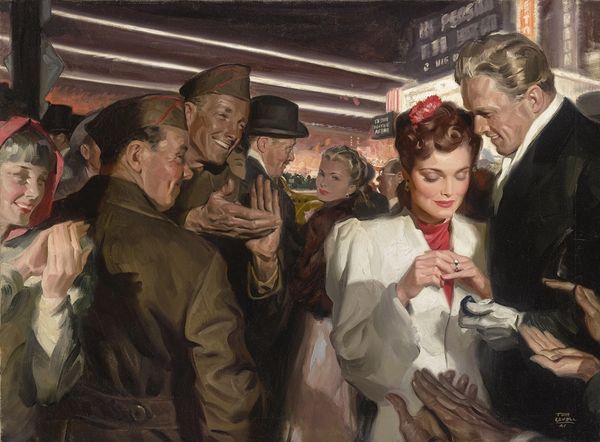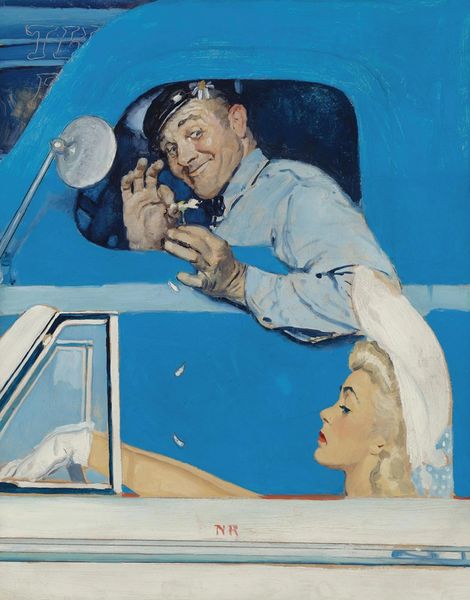
painting, acrylic-paint
#
portrait
#
narrative-art
#
painting
#
graffiti art
#
street art
#
acrylic-paint
#
figuration
#
acrylic on canvas
#
genre-painting
#
portrait art
#
modernism
Copyright: Modern Artists: Artvee
Curator: At first glance, this is explosive! A roller coaster setting populated by… shall we say… very gendered figures acting out some ambiguous, yet aggressive scenario. Editor: Indeed. We are looking at "The Night the Mob Took Over Thrill Park," painted in 1967 by Mort Künstler, in acrylic paint. The visual dynamics place male aggression squarely alongside idealized female forms—an unsettling and quite loaded composition for its time, particularly considering the burgeoning feminist movement. Curator: I'm immediately drawn to the roller coaster as a powerful symbol here. A space of thrilling risk and precarious fun, a visual metaphor ripe with interpretations around class, gender, and the pursuit of capitalist pleasures that could become equally available as equally threatening, or precarious to everyone, not unlike organized crime. The image reads as highly performative, consciously constructed in an effort to explore shifting, controversial roles. Editor: Right. The artist uses archetypes effectively. Consider the gun-wielding man – a modern-day gangster – juxtaposed against the beauty queens. Note how this man’s sharp, angular form contrasts with their curves. The hard vs soft; power versus display. The number "1" is boldly blazoned on the lead car, signaling power, conquest, dominance over "2" at which our tough guy seems to be taking aim. Curator: The objectification is overt, of course, and cannot be ignored; I am reminded of the ways beauty pageants reinforce hierarchical social constructs and the continued patriarchal commodification of female beauty. These women are trapped on a rollercoaster—both literally and figuratively! How interesting is that sash worn by the supposed queen—"California"? Editor: Absolutely! Künstler wields the visual shorthand of his time. The iconography of pin-up girls meets mobster film noir to depict these complicated interactions of mid-century gender dynamics; they have weight as signs in and of themselves. Curator: This work offers an unsettling social commentary on spectacle, violence, and gender during a critical period of social transformation. Editor: Exactly. And the artist uses familiar iconography to unsettle comfortable views, making for a potent symbol of changing, but clearly imbalanced, American culture.
Comments
No comments
Be the first to comment and join the conversation on the ultimate creative platform.
